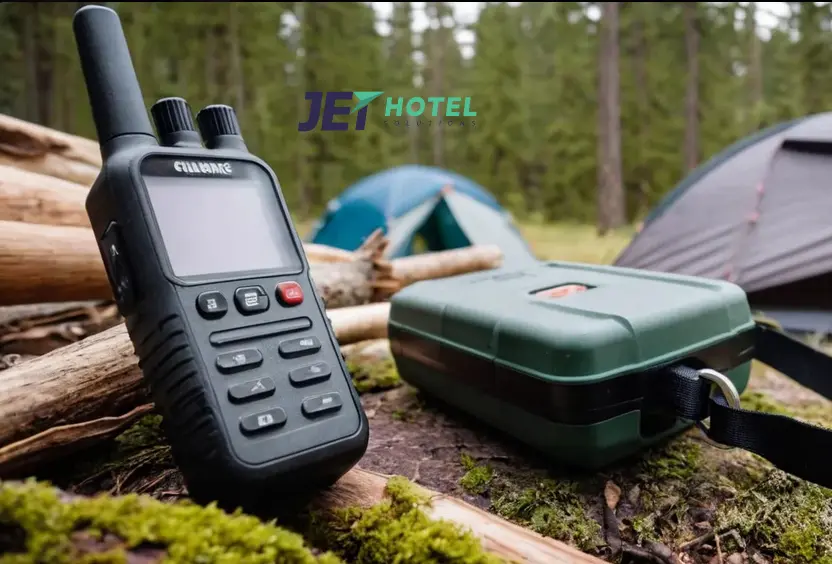How Far Can a Walkie Talkie Be Used?
I’ve always been fascinated by the capabilities of walkie talkies. These handy devices have been my trusted companions on countless hiking trips, mountain climbs, and camping escapades.
But one question that has often crossed my mind is: just how far can these portable communication devices reach? After extensive research and personal experience, I’ve discovered that the answer isn’t as straightforward as one might think. The range of a walkie talkie can vary significantly depending on several factors.
However, under optimal conditions with a high-quality device, you can expect a range of up to 50 miles. More realistically though, the effective range hovers around 35 miles in most cases. So, what exactly affects the range of a walkie talkie? Let’s dive in with Jet Hotel Solutions and explore the key factors:
Terrain and Geographic Conditions
One of the most significant determinants of a walkie talkie’s range is the terrain and geographic conditions. These devices operate on a “line of sight” principle, meaning that if you can’t see the person you’re trying to communicate with, the signal may struggle to reach them effectively.
Obstacles like dense forests, buildings, hills, and mountains can block or deflect radio waves, limiting the range. Even weather conditions like heavy rain or blizzards can interfere with the signal.
In my experience, I’ve found that open, flat areas with minimal obstructions provide the best conditions for maximizing the range of my walkie talkie.
Power Output
Another crucial factor is the power output of the walkie talkie, measured in watts. Higher-wattage devices can generally transmit signals over longer distances because they can overcome air pressure and obstacle resistance more effectively.
However, it’s important to note that the Federal Communications Commission (FCC) sets limits on the wattage of commercial two-way radios, and high-powered models may require licenses.
Radio Frequency Used
The radio frequency used by the walkie talkie also plays a role in its range. Very High Frequency (VHF) and Ultra High Frequency (UHF) are more suitable for long-distance communication compared to other frequencies. But again, the choice of frequency is regulated, and certain frequencies may require a license to use.
Extending the Range
While the range of a walkie talkie is inherently limited, there are ways to maximize or extend it:
Upgrade to a Better Model
If you require extended communication capabilities, consider investing in a model designed for longer distances. Remember, your walkie-talkie’s range is ultimately limited by its specifications.
Use a Repeater
A repeater is a device that amplifies and retransmits signals, acting as a relay station. Installing repeaters on tall buildings can significantly extend the reach of your walkie-talkie beyond its standard range.

Older devices and antennas may suffer from weakened signals. Upgrading to a new antenna with broader coverage can help extend your range.
Replace the Batteries
If you’ve been using the same batteries for a while, you may notice a decrease in range. Always use fresh, high-quality batteries to ensure your walkie-talkie performs at its best.
Factors to Consider When Purchasing a Long-Range Walkie Talkie
When shopping for a walkie talkie with an impressive range, there are several factors to consider beyond just the distance it can reach:
- Durability
Consider the environment you’ll be using the walkie talkie in. If you’re planning to use it outdoors, look for a model that is waterproof and weather-resistant. - Frequency Regulations
Long-range walkie talkies often use frequencies that require a license. Before purchasing a model that requires a license, take the time to understand what having a license entails. - Ease of Use
Look for a walkie talkie that fits comfortably in your hand, is easy to transport, and has features that are simple to use, especially in case of an emergency. The push-to-talk feature found on most walkie talkies is particularly useful, allowing you to use the device with gloves on and with just one button press.
In conclusion, while the range of a walkie talkie can vary greatly depending on various factors, with the right model and optimal conditions, you can achieve impressive distances. By understanding the factors that affect range and considering your specific needs, you can select a walkie talkie that will keep you connected on all your adventures.
